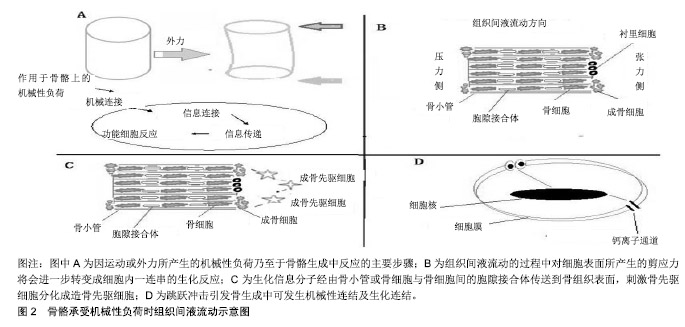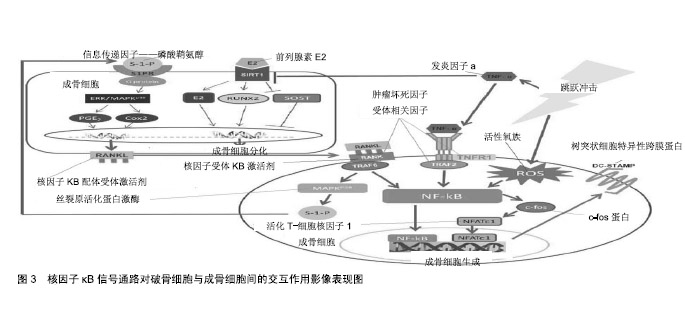| [1]Belavý DL, Armbrecht G, Blenk T, et al. Greater association of peak neuromuscular performance with cortical bone geometry, bone mass and bone strength than bone density: A study in 417 older women. Bone. 2016;83:119-126. [2]王晓阳,彭霞,董芬,等.云南省汉族人群骨骼健康状况及影响因素调查[J].中国公共卫生,2018,34(5):720-723.[3]夏维波,廖二元,章振林,等.补钙和维生素D对骨骼健康的必要性[J].中华骨质疏松和骨矿盐疾病杂志,2018,11(1):20-24.[4]吴志建,王竹影,宋彦,等.运动锻炼干预对我国中老年女性骨密度影响的meta分析[J].首都体育学院学报,2019,31(1):91-96.[5]赵常红,李世昌,孙朋,等.运动力学刺激对骨质量影响的研究进展[J].中国骨质疏松杂志,2018,24(6):820-824.[6]Mudd LM, Fornetti W, Pivarnik JM. Bone mineral density in collegiate female athletes: comparisons among sports. J Athl Train. 2007;42(3):403-408.[7]Marinho SM, Carraro Eduardo JC, Mafra D. Effect of a resistance exercise training program on bonemarkers in hemodialysis patients. Sci Sports. 2017;2(2):99-105.[8]Papageorgiou M, Martin D, Colgan H, et al. Bone metabolic responses to low energy availability achieved by diet or exercise in active eumenorrheic women. Bone. 2018;114:181-188.[9]Mullender MG, van der Meer DD, Huiskes R, et al. Osteocyte density changes in aging and osteoporosis. Bone. 1996;18(2):109-113.[10]Ginty F, Rennie KL, Mills L, et al. Positive, site-specific associations between bone mineral status, fitness, and time spent at high-impact activities in 16- to 18-year-old boys. Bone. 2005; 36(1):101-110. [11]赵常红,李世昌,孙朋,等.运动对骨骼和肌肉的共调作用研究[J].首都体育学院学报,2017,29(6):565-570,576.[12]Cao J, Chen T, Gong Y, et al. Molecular mechanisms of the secretion of cytokines and chemokines from human monocytes activated by pneumococcal surface protein A (PspA): Roles of mitogen-activated protein kinases and NF-kappaB. Microb Pathog. 2010;48(6):220-229.[13]Ning R, Zhang X, Guo X, et al. Staphylococcus aureus regulates secretion of interleukin-6 and monocyte chemoattractant protein-1 through activation of nuclear factor kappaB signaling pathway in human osteoblasts. Braz J Infect Dis. 2011;15(3):189-194.[14]Hippenstiel S, Schmeck B, Seybold J, et al. Reduction of tumor necrosis factor-alpha (TNF-alpha) related nuclear factor-kappaB (NF-kappaB) translocation but not inhibitor kappa-B (Ikappa-B)-degradation by Rho protein inhibition in human endothelial cells. Biochem Pharmacol. 2002;64(5-6):971-977.[15]Mancuso ME, Johnson JE, Ahmed SS, et al. Distal radius microstructure and finite element bone strain are related to site-specific mechanical loading and areal bone mineral density in premenopausal women. Bone Rep. 2018;8:187-194.[16]Genetos DC, Karin NJ, Geist DJ, et al. Purinergic signaling is required for fluid shear stress-induced NF-κB translocation in osteoblasts. Exp Cell Res. 2011;317(6):737-744. [17]Lin PS, Cheng RH, Chang MC, et al. TGF-β1 stimulates cyclooxygenase-2 expression and PGE2 production of human dental pulp cells: Role of ALK5/Smad2 and MEK/ERK signal transduction pathways. J Formos Med Assoc. 2017;116(10):748-754. [18]Main RP. Osteocytes and the bone lacunar-canalicular system: Insights into bone biology and skeletal function using bone tissue microstructure. Int J Paleopathol. 2017;18:44-46.[19]Cavo M, Scaglione S. Scaffold microstructure effects on functional and mechanical performance: Integration of theoretical and experimental approaches for bone tissue engineering applications. Mater Sci Eng C Mater Biol Appl. 2016;68:872-879. [20]Knothe Tate ML, Knothe U, Niederer P. Experimental elucidation of mechanical load-induced fluid flow and its potential role in bone metabolism and functional adaptation. Am J Med Sci. 1998;316(3): 189-195.[21]Galea GL, Lanyon LE, Price JS. Sclerostin's role in bone's adaptive response to mechanical loading. Bone. 2017;96:38-44. [22]Hinton PS, Nigh P, Thyfault J. Effectiveness of resistance training or jumping-exercise to increase bone mineral density in men with low bone mass: A 12-month randomized, clinical trial. Bone. 2015; 79:203-212. [23]Iqbal J, Zaidi M. Molecular regulation of mechanotransduction. Biochem Biophys Res Commun. 2005;328(3):751-755.[24]Spyropoulou A, Karamesinis K, Basdra EK. Mechanotransduction pathways in bone pathobiology. Biochim Biophys Acta. 2015;1852 (9):1700-1708. [25]Steinmetz M, Pelster B, Lucanus E, et al. Atorvastatin-induced increase in progenitor cell levels is rather caused by enhanced receptor activator of NF-kappaB ligand (RANKL) cell proliferation than by bone marrow mobilization. J Mol Cell Cardiol. 2013;57: 32-42.[26]Song I, Kim JH, Kim K, et al. Regulatory mechanism of NFATc1 in RANKL-induced osteoclast activation. FEBS Lett. 2009;583(14): 2435-2440. [27]Tonello S, Rizzi M, Migliario M, et al. Low concentrations of neutrophil extracellular traps induce proliferation in human keratinocytes via NF-kB activation. J Dermatol Sci. 2017;88(1): 110-116. [28]Yasunori K, Masaaki T, Tetsuyuki N, et al. Reduction of urinary levels of pyridinoline and deoxypyridinoline and serum levels of soluble receptor activator of NF-kappaB ligand by etanercept in patients with rheumatoid arthritis. Clin Rheumatol. 2008;27(9): 1093-1101.[29]Wang QS, Zhang XC, Li RX, et al. A comparative study of mechanical strain, icariin and combination stimulations on improving osteoinductive potential via NF-kappaB activation in osteoblast-like cells. Biomed Eng Online. 2015;14:46. [30]Sanecka A, Ansems M, Prosser AC, et al. DC-STAMP knock-down deregulates cytokineproduction and T-cell stimulatory capacity of LPS-matured dendritic cells. BMC Immunol. 2011,12:57.[31]邱宏达.赤足与穿鞋跑步之着地策略分析[J].大专体育学刊, 2000, 4(2):101-108.[32]Heinonen A, Sievänen H, Kyröläinen H, et al. Mineral mass, size, and estimated mechanical strength of triple jumpers' lower limb. Bone. 2001;29(3):279-285.[33]Yu B, Lin CF, Garrett WE. Lower extremity biomechanics during the landing of a stop-jump task. Clin Biomech (Bristol, Avon). 2006;21(3):297-305.[34]Johannsen N, Binkley T, Englert V, et al. Bone response to jumping is site-specific in children: a randomized trial. Bone. 2003;33(4):533-539.[35]Greenway K, Walkley JW, Rich PA. Impact exercise andbone density inpremenopausal women withbelow average bone density forage. Eur J Appl Physiol. 2015;115(11):2457-2469.[36]Multanen J, Rantalainen T, Kautiainen H, et al. Effect of progressive high-impact exercise on femoral neck structural strength in postmenopausal women with mild knee osteoarthritis: a 12-month RCT. Osteoporos Int. 2017;28(4):1323-1333.[37]Martyn-St James M, Carroll S. Meta-analysis of walking for preservation of bone mineral density in postmenopausal women. Bone. 2008;43(3):521-531.[38]Ishikawa S, Kim Y, Kang M, et al. Effects of weight-bearing exercise on bone health in girls: a meta-analysis. Sports Med. 2013;43(9):875-892.[39]Wang L, Khoo BCC, Cheng XG, et al. Differences in femoral neck structure between elderly Caucasian and Chinese populations: a cross-sectional study of Perth-Beijing cohorts. Arch Osteoporos. 2017;12(1):72.[40]Beck TJ, Fuerst T, Gaither KW, et al. The effects of bazedoxifene on bone structural strength evaluated by hip structure analysis. Bone. 2015;77:115-119.[41]Coventry E, O'Connor KM, Hart BA, et al. The effect of lower extremity fatigue on shock attenuation during single-leg landing. Clin Biomech (Bristol, Avon). 2006;21(10):1090-1097.[42]Morgan AL, Weiss J, Kelley ET. Bone turnover response to acute exercise with varying impact. Int J Exerc Sci. 2015;8(2):154-163.[43]任立峰,武斌,郝文博.过度有氧运动对不同性别成年骨代谢相关激素的影响[J].科学技术与工程,2017,17(13):136-140.[44]Roghani T, Torkaman G, Movasseghe S, et al. Effects of short-term aerobic exercise with and without external loading on bone metabolism and balance in postmenopausal women with osteoporosis. Rheumatol Int. 2013;33(2):291-298.[45]唐量,赵新娟,高小航,等.间歇负重跑台联合有氧运动对胰岛素抵抗大鼠股骨微结构及力学特性的影响[J].陕西师范大学学报(自然科学版),2016,44(6):110-115.[46]刘龙祥.抗阻训练对青少年骨密度的影响研究[J].当代体育科技, 2017,7(23):213-214.[47]陈金鳌,张霈,杨帆,陆阿明.青年和老年男女抗阻训练后的骨密度变化特征[J].成都体育学院学报,2013,39(2):83-88.[48]徐锋鹏,胡敏,黄俊豪,等.不同类型运动对骨密度影响的研究进展[J].上海体育学院学报,2017,41(1):55-60.[49]孙成涛,杨鸫祥.运动疗法防治原发性骨质疏松症的研究进展[J].中华中医药学刊,2016,34(9):2249-2252.[50]Tritos NA. Focus on growth hormone deficiency and bone in adults. Best Pract Res Clin Endocrinol Metab. 2017;31(1):49-57.[51]Petkus DL, Murray-Kolb LE, De Souza MJ. The Unexplored Crossroads of the Female Athlete Triad and Iron Deficiency: A Narrative Review. Sports Med. 2017;47(9):1721-1737.[52]Mitoma H, Horiuchi T, Tsukamoto H, et al. Molecular mechanisms of action of anti-TNF-α agents - Comparison among therapeutic TNF-α antagonists. Cytokine. 2018;101:56-63.[53]Scott D, Tan W, Lee JSH, et al. Vascular Cell Physiology Under Shear Flow: Role of Cell Mechanics and Mechanotransduction. In: Reinhart-King C, eds. Mechanical and Chemical Signaling in Angiogenesis. Studies in Mechanobiology, Tissue Engineering and Biomaterials, vol 12. Springer, Berlin, Heidelberg. 2013.[54]Nasri R, Hassen Zrour S, Rebai H, et al. Combat sports practice favors bone mineral density among adolescent male athletes. J Clin Densitom. 2015;18(1):54-59.[55]Atashak S, Azizbeigi K, Ali Azarbayjani M, et al. Changes of stress proteins and oxidative stress indices with progressive exercise training in elderly men. Sci Sports. 2017;32(3):152-159.[56]Santos RV, Bassit RA, Caperuto EC, et al. The effect of creatine supplementation upon inflammatory and muscle soreness markers after a 30km race. Life Sci. 2004;75(16):1917-1924.[57]Kohara H, Kitaura H, Fujimura Y, et al. IFN-γ directly inhibits TNF-α-induced osteoclastogenesis in vitro and in vivo and induces apoptosis mediated by Fas/Fas ligand interactions. Immunol Lett. 2011;137(1-2):53-61.[58]Barcelos RP, Bresciani G, Rodriguez-Miguelez P, et al. Diclofenac pretreatment effects on the toll-like receptor 4/nuclear factor kappa B-mediated inflammatory response to eccentric exercise in rat liver. Life Sci. 2016;148:247-253.[59]Lee SH, Jang HD. Scoparone attenuates RANKL-induced osteoclastic differentiation through controlling reactive oxygen species production and scavenging. Exp Cell Res. 2015;331(2): 267-277.[60]Rodrigues B, Jorge L, Mostarda CT, et al. Aerobic exercise training delays cardiac dysfunction and improves autonomic control of circulation in diabetic rats undergoing myocardial infarction. J Card Fail. 2012;18(9):734-744. |
.jpg)


.jpg)
.jpg)